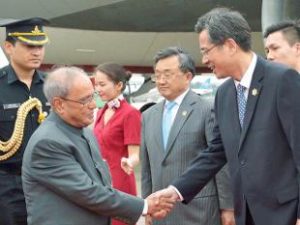 Gearing up to participate in the next years Vibrant Gujarat Summit as a partner country, the US India Business Council has termed Gujarat as India’s “growth engine”.
Gearing up to participate in the next years Vibrant Gujarat Summit as a partner country, the US India Business Council has termed Gujarat as India’s “growth engine”.
“The state of Gujarat is one of the leading states in India for industries and is recognised as India’s growth engine,” USIBC president Mukesh Aghi yesterday said in an interaction with a delegation of senior official and business leaders from Gujarat.
“Vibrant Gujarat Summit is one of the most notable efforts in India’s attempts to place itself as the topmost investment destination,” he said, adding that USIBC is delighted to partner with the Vibrant Gujarat Summit.
Aghi said the summit is also timely as it will be held during a critical phase of the GST roll-out.
Led by Bharat Lal, Resident Commissioner of Gujarat, the Gujarat delegation concluded its multi-city roadshow in the US.
The multi-city industry roundtables aim to provide an opportunity for the delegation to present Gujarat as the leading investment destination in India.
SIBC organised industry receptions and roundtables in Houston, Chicago, New York, Washington DC and Menlo Park, providing an opportunity for the delegation to meet over 100 top US companies across industries, including healthcare, food and agriculture, defence, logistics and infrastructure.
Some of the companies in attendance during the roadshow included MasterCard, UST Global, JP Morgan, Thompson Reuter, Abbott, Aemetis, Lockheed Martin, Cisco and Welspun.
As part of the roadshow, the Council also hosted a roundtable with Ajay Pandey, the Managing Director and Chief Executive Officer of the Gujarat International Finance Tec-City (GIFT).
GIFT is being developed as a global financial and IT services hub, a first of its kind in India, designed to be at or above par with globally benchmarked financial centers.
Pandey discussed the International Financial Services Centre in GIFT and the benefits to the entities setting up operations in these cities that include the Minimum Alternative Tax, reduced from 18.5 per cent to nine per cent, the Security Transaction Tax (STT), Commodity Transaction Tax (CTT) and Long Term Capital Gains (LTCG) waived off, a media release said.
Source : http://economictimes.indiatimes.com/articleshow/54376135.cms





